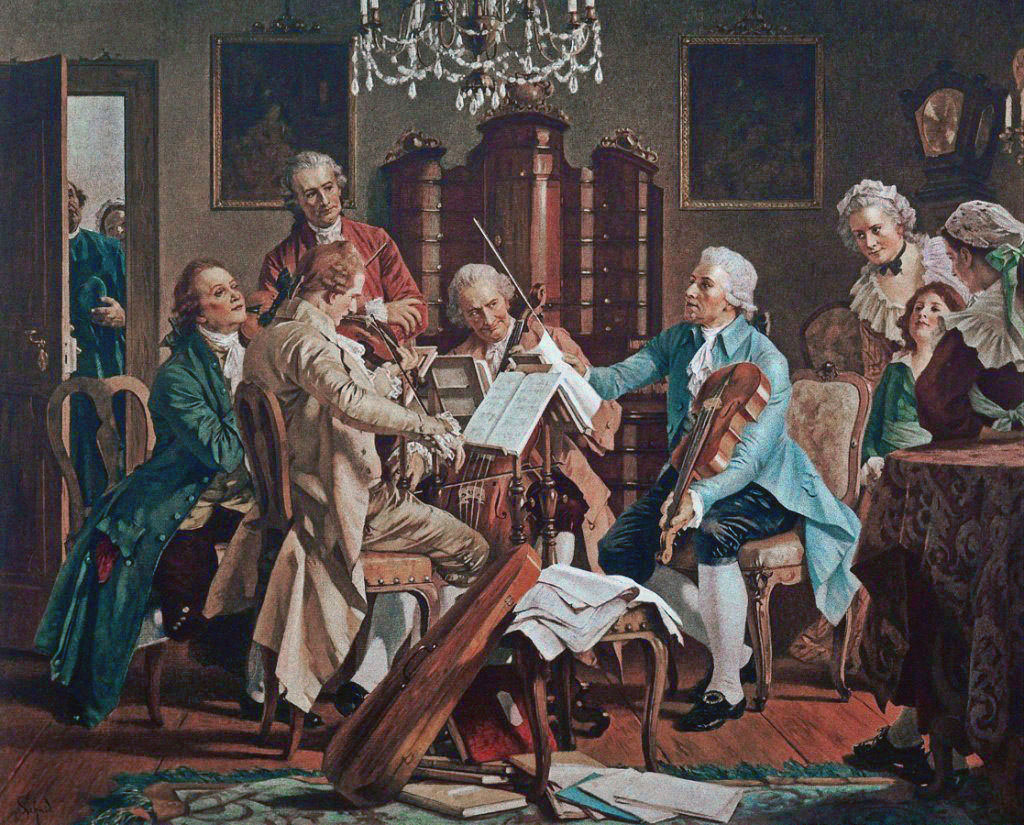
A chamber music residency is taking place during these days in Ossiach, a beautiful place we recently wrote about. A selected group of string players (Tommaso Toni, Aura Fazio, Léna Ruisz, Lavinia Soncini, Anna Krzyżak, Irina Fârtat, Cecilia Clò, Leah Plave) is rehearsing under the guidance of Chiara Banchini, violinist and conductor with whom Theresia has a strong connection.
The musical program is devoted to string quartets by Haydn (String Quartet in d minor op. 42 Hob. III:43), Mozart (String Quartet in d minor n. 13 KV 173) and Boccherini (Quartets G 200 and G 223 “La Tiranna”). A concert at Kultur Forum Amthof will close the residency.
Ms Chiara Banchini, this chamber project is devoted to string quartets: what are our musicians playing and how is the residency going?
It is going very well. A couple of participants couldn’t be there, unfortunately, as they were quarantined the day before the beginning, so we had to slightly resize the program. Still, it remained faithful to the initial idea of combining an “important” quartet (by Haydn, Mozart or Pleyel) with one of the short quartets of Boccherini, which are real jewels. They are very agile pieces of music, with only two movements but perfect to make the experience of playing in a quartet.
Many of the musicians present at this residency are new members of Theresia, selected in the auditions last summer: how is the work going?
I am extremely pleased with the level of all the participants: I can see they are very prepared, well-tuned, and they are also very good at working together and listening to each other. I think the general level of the orchestra has risen a lot in the past five years. Everybody is doing a great job.
How significant is it for a string player to live the experience of playing in a quartet? And how difficult is it?
As a matter of fact, it is both important and difficult! A string musician has to face huge problems in terms of tuning and sound. It’s way easier to play in another kind of ensemble, like a piano trio or a piano quartet, or playing together with wind instruments. A piano provides you with a constant reference for the tuning of the ensemble, although you are forced in sticking to equal temperament, which is not ideal for us string players. With wind instruments, the differences in sound make things easier in terms of tuning and blending. Then, you have relational issues to face: many famous quartets are known also for their members’ quarrelsomeness! But, the repertoire is so stunning, and rich: even only focusing on Haydn, you have more than eighty wonderful quartets! From every point of view, playing in a quartet is something no string player should miss.
In your professional activity, how much did you dedicate to string quartets?
A lot. With my musical partners from Ensemble 415, we explored Haydn, Mozart, Boccherini, Beethoven’s opus 18. We didn’t go further, though. My generation was the first to switch from the modern instrument to period one: deepening the baroque style, moving one toward the classical repertoire, studying period essays and looking for sources was a big deal. When I think of going beyond Beethoven and approaching, for example, Schubert, I feel quite overwhelmed with the idea of studying and knowing everything I can. For this generation, things are different: they are more confident because they could take advantage of the expertise and the achievements of the older ones, and they have had more chances to experiment playing on period instruments, so I’m sure they would easily approach composers like Schubert. In this “easiness”, though, I also see a lack of interest in studying methods and deepening their theoretical knowledge of historical performance, so with a bit of more effort they will really go a long way.


